God’s Promises Evident in Israel Today
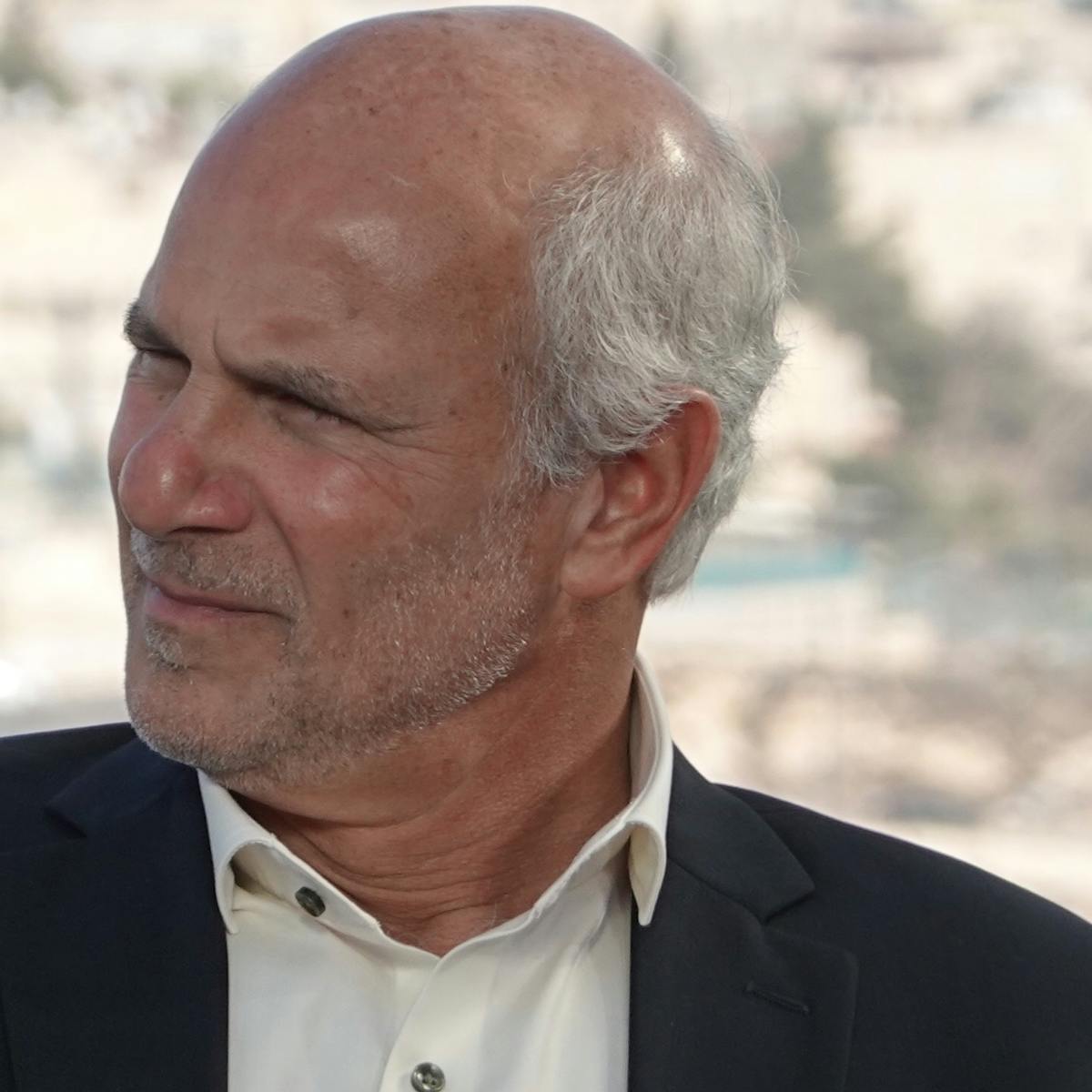
“So shall My word be that goes forth from My mouth; It shall not return to Me void, but it shall accomplish what I please, and it shall prosper in the thing for which I sent it.” (Isaiah 55:11).
Are the ancient biblical texts “just” archaic legends and made-up stories about humanity’s origin and the early history of the nation of Israel? Are these historic records, prophecies and instructions merely fairy tales that are supposed to offer us a sense of identity while keeping us bound to religious traditions and customs that profit the few while oppressing the many?
Or, on the contrary, as many believe, are these biblical texts in fact inspired records that stretch over thousands of years and form reliable and trustworthy communications from our Creator to His children?
And if so, can we find evidence that confirms the reliability of God’s word? Are there observable proofs around us that point to the truthfulness and accuracy of the biblical record? We believe that the answer to this question is a resounding YES.
In this essay, we will highlight various geographical, topographical, and archaeological points of interest in Israel that bring specific biblical texts and prophecies to life.So join us for this exciting journey, and let us start with the big picture; the return of the people of Israel to the land of Israel.
1. Can These Dry Bones Live?
The primary and most notable and observable evidence pointing to the credibility of God’s word is found in the fact that the nation of Israel is back in her ancient homeland. Many historians point to Israel’s survival during the recent 2,000 year of exile as a miracle in and of itself.
They observe that the Jewish people not only managed to preserve their national identity (while away from their homeland for so long), but also that they survived continual waves of persecution, rejection, forced conversation and even annihilation.
But still, a greater miracle is the return of those same Jewish exiles to Zion in modern history.

Driven from the four corners of the earth and motivated by a newly kindled flame of national restoration, waves of Jewish settlers began to make their way back to the Land which their ancestors left 2,000 years ago.
Poorly equipped and barely prepared for the hardships awaiting them, Jewish pioneers arrived by sea, train, camelback, and some even on foot, into the desolate and barren land.
Against all odds and at great sacrifice, these brave souls endured the harsh conditions, the back-breaking labor, and the mounting hostilities as they persistently rebuilt their national home.
All of our ancient prophets predicted this great return, from Moses to Malachi to the Apostle Paul. Moses warned Israel even before they entered the Land that due to their corruption God will scatter them all over the world.
However, he sweetened the bitter pill with a promise that after they repent and return to God, “that the LORD your God will bring you back from captivity, and have compassion on you, and gather you again from all the nations where the LORD your God has scattered you.” (Deuteronomy 30:3).
Jeremiah, who warned Israel of the coming Babylonian invasion, the destruction of the Temple, and the unavoidable exile, also comforted the people with a distant vision of restoration, saying,
“I will be found by you, says the LORD, and I will bring you back from your captivity; I will gather you from all the nations and from all the places where I have driven you, says the LORD … (Jeremiah 29:14).
Amos, following his predictions of judgment that was to come upon Israel because of their moral corruption, also offered hope when he prophesied, saying, “I will bring back the captives of My people Israel; they shall build the waste cities and inhabit them; they shall plant vineyards and drink wine from them; they shall also make gardens and eat fruit from them.
I will plant them in their land, and no longer shall they be pulled up from the land I have given them, says the LORD your God.” (Amos 9:14-15).
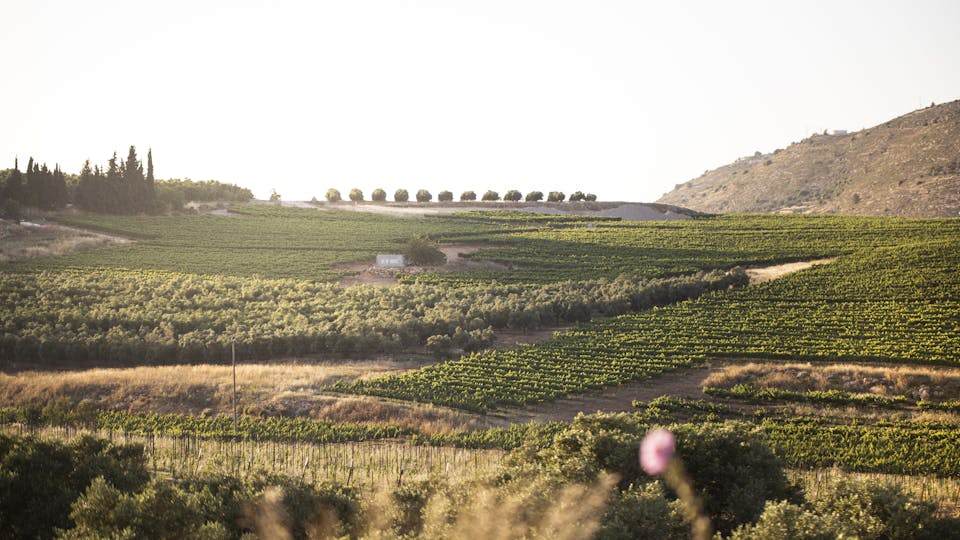
The Apostle Paul, when instructing the Roman community of faith regarding Israel’s calling and destiny, spoke clearly about her future restoration, saying, “For I do not desire, brethren, that you should be ignorant of this mystery, lest you should be wise in your own opinion, that blindness in part has happened to Israel until the fullness of the Gentiles has come in.
And so all Israel will be saved, as it is written: ‘The Deliverer will come out of Zion, and He will turn away ungodliness from Jacob; for this is My covenant with them, when I take away their sins.’” (Romans 11:25-27).
When the prophet Ezekiel recorded his epic vision of the “Dry Bones” of Israel coming back from death to life, the Spirit of God spoke through him and described a gradual and systematic national restoration where the various pieces of the miracle are added one by one.
Ezekiel described how God commanded him to “Prophesy to these bones, and say to them, ‘O dry bones, hear the word of the LORD! Thus says the Lord GOD to these bones: Surely I will cause breath to enter into you, and you shall live.
I will put sinews on you and bring flesh upon you, cover you with skin and put breath in you; and you shall live. Then you shall know that I am the LORD…’” (Ezekiel 37:4-6). Can you discern the gradual nature of the restoration God showed the prophet?
The keen observer will recognize these progressive stages of Israel’s “resurrection” (as the prophet metaphorically described it) when considering Israel’s modern history. The earliest pioneering communities in the revived nation were mostly agrarian.
Quickly, Israel began to recreate its Hebrew language and establish urban centers. Alongside these developments, it built advanced industries, national cultural and political institutions, including the Knesset (Parliament), government, flag, anthem, army, air force, and navy.
Today, Israel is celebrated as a "Start-Up Nation" and a global leader in high-tech and energy production.

As a restored nation, Israel still awaits the crowning promise of Ezekiel’s “Dry Bones” prophecy which is the coming of God’s Spirit! As the prophet wrote, “He said to me, ‘prophesy to the breath, prophesy, son of man, and say to the breath,’ “thus says the Lord GOD:”
‘Come from the four winds, O breath, and breathe on these slain, that they may live.’ So I prophesied as He commanded me, and breath came into them, and they lived, and stood upon their feet, an exceedingly great army.” (Ezekiel 37:9-10).
Many of God’s people here in Israel earnestly pray for and expect this promise to find its fulfillment in the coming days as we see His promises of restoration already evident and being fulfilled all around us.
Having looked at the big picture, let us consider the following sites in Israel that point to and “validate” biblical texts.
2. The Vineyards of Samaria
The prophet Jeremiah, following his painful predictions about Israel’s coming hardships, concluded with a word of comfort, saying,
“Again I will build you, and you shall be rebuilt, o virgin of Israel! You shall again be adorned with your tambourines, and shall go forth in the dances of those who rejoice.
You shall yet plant vines on the mountains of Samaria; the planters shall plant and eat them as ordinary food.” (Jeremiah 31:4-5).
As you travel through the beautiful mountain range of Samaria with one of our Sar-El Tours’ groups, you will notice the many vineyards and wineries that the Jewish settlers planted and built in that fertile region.
In fact, Israel has gained quite an international reputation with our many boutique wine growers, with some of our most famous wineries located in Samaria. Thanks to the unique soil, climate, sunshine, and the expertise of the vine dressers, some of the world’s most acclaimed wines are produced.
These exceptional wines come right from the mountains of Samaria today. A prophecy fulfilled, or just a coincidence? You decide.
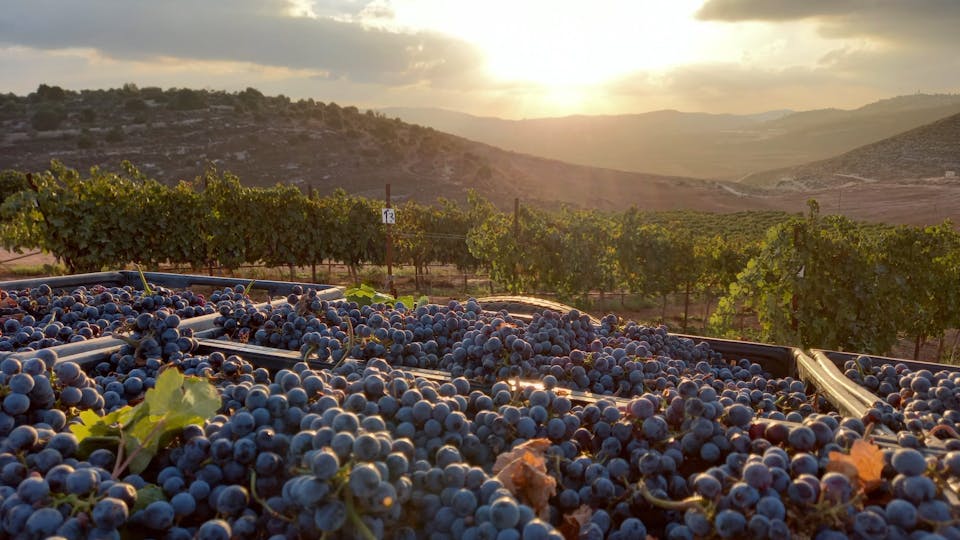
3. How Dead is The Dead Sea?
A visit to the Dead Sea is a “must” for most of our Sar-El Tours’ groups not only because the visitors get to enjoy the epic views of the lowest point on earth (1,400 feet below sea level), but also due to its biblical importance in relation to past and future events.
You will recall the dramatic story of the destruction of Sodom and Gomorrah in the Book of Genesis. Recent geological and topographical surveys in the region point to what some scientists and researchers believe are the reasons for the mineral rich and lifeless terrain.
Roughly 4,000 years ago, according to this research, a colossal meteor entered earth’s atmosphere at supersonic speed and incredible temperatures, and exploded with the mounting atmospheric friction high above the cities of Sodom and Gomorrah.
The fire storm and super winds that followed that colossal aerial explosion swept the entire area, destroyed anything in their path, and left the region scarred and lifeless for thousands of years.
And while our guests enjoy the mineral baths, the world famous spas, and the unmatched experience of floating in the Dead Sea, it is the distant echoes of the biblical story that leave the deepest impact upon their hearts.
However, as biblical stories go, there is a “happy end” to this one too as the prophet Ezekiel predicts a future healing and reviving of the entire arid region. Seeing in a vision a great river flowing from the Jerusalem Temple toward the Dead Sea, Ezekiel declared,
“This water flows toward the eastern region, goes down into the valley, and enters the sea. When it reaches the sea, its waters are healed. And it shall be that every living thing that moves, wherever the rivers go, will live.
There will be a very great multitude of fish, because these waters go there; for they will be healed, and everything will live wherever the river goes.” (Ezekiel 47:8-9).
This river that Ezekiel saw in his visions looks and behaves a lot like the River of Life that flows through the heavenly Jerusalem as foretold in the Book of Revelation. John, the last Apostle alive, described this amazing river, saying,
“And He showed me a pure river of water of life, clear as crystal, proceeding from the throne of God and of the Lamb. In the middle of its street and on either side of the river was the tree of life, which bore twelve fruits, each tree yielding its fruit every month. The leaves of the tree were for the healing of the nations.” (Revelation 22:1-2).
The next time you find yourself by the Dead Sea, remember these great biblical promises and imagine the region totally healed, abounding with life and fruit in Messiah’s Kingdom.
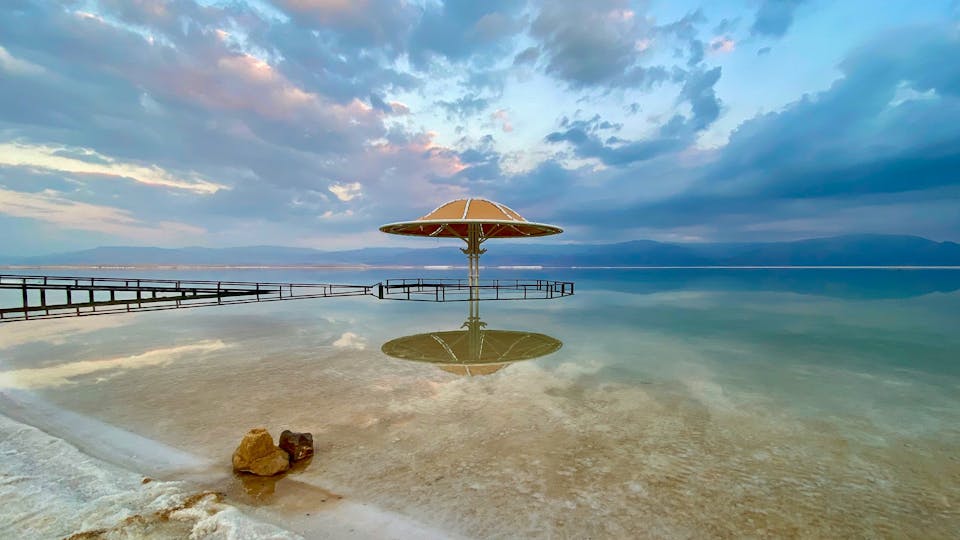
4. Woe to Capernaum, Corazim & Bethsaida
Some of God’s biblical promises are beautiful and fill our hearts with comfort and joy; others are prophecies of doom and judgment. Such were the Lord’s warnings regarding the Galilean towns of Capernaum, Corazim and Bethsaida.
Situated on the northern shores of the Sea of Galilee, these three Jewish towns which were but a short distance from one another enjoyed the presence, the teachings, and the miracles of Jesus more than any other town.
For nearly three years Jesus of Nazareth based his Galilean activities in Capernaum, and nearly 80% of his recorded miracles, teachings, and parables took place in this vicinity.
This privileged position and the towns’ poor response to heaven’s visitation prompted Jesus to issue the following rebuke, saying, “Woe to you, Corazim! Woe to you, Bethsaida!
For if the mighty works which were done in you had been done in Tyre and Sidon, they would have repented long ago in sackcloth and ashes. But I say to you, it will be more tolerable for Tyre and Sidon in the Day of Judgment than for you.
And you, Capernaum, who are exalted to heaven, will be brought down to Hades; for if the mighty works which were done in you had been done in Sodom, it would have remained until this day. But I say to you that it shall be more tolerable for the land of Sodom in the Day of Judgment than for you.” (Matthew 11:21-24).
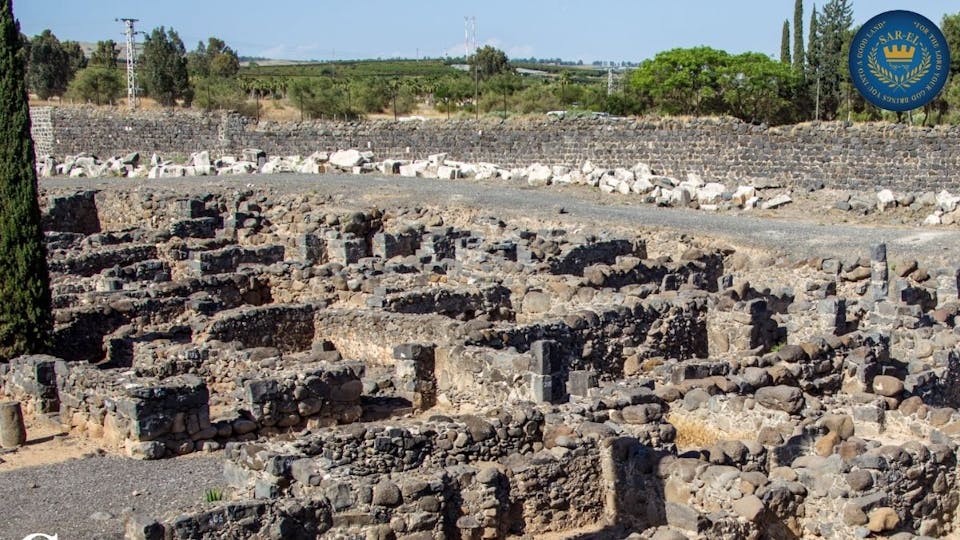
This is not an easy prophecy to digest… and yet today, traveling by the northern shores of the Sea of Galilee, your Sar-El Tours’ Guide will point out to you the excavated archeological remains of those three towns.
Why? Because that is all that remains of them; ruins and archeological excavations. Just as Jesus had predicted nearly 2,000 ago, those once thriving communities were destroyed and abandoned after the Byzantine period, never to be rebuilt again, just as the Bible foretold.
5. We Need More Room!
As you know, Israel is a relatively small country. Israel is a beautiful, narrow strip of land along the eastern shores of the Mediterranean Sea. Averaging about 50 miles in width and 300 miles in length, it holds some of the most stunning vistas, landscapes, and locations in the Middle East.
Bible scholars point to the interesting fact that Israel’s present size is still but a small portion of the landmass God originally promised Father Abraham (see Genesis 15:18), or even the territories that King David controlled at the height of his Kingdom reign.
This little land, however, is home to a very productive and active population of nearly 10 million citizens and foreign residents. In most parts of Israel, you’ll encounter cultivated fields, active farms, and bustling urban developments.
Industrial zones are scattered throughout, supporting the country’s vibrant economy. Modern infrastructure, including trains and highways, seamlessly connects these communities, making travel efficient and accessible.
What many folks don’t know, however, is that this robust and busy country was prophesied to be like that in the Bible. Isaiah predicted this growth and expansion when he prophesied, saying, “Sing, O barren, you who have not borne! Break forth into singing, and cry aloud, you who have not labored with child! ...
Enlarge the place of your tent, and let them stretch out the curtains of your dwellings; Do not spare; lengthen your cords, and strengthen your stakes. For you shall expand to the right and to the left and your descendants will inherit the nations, and make the desolate cities inhabited.” (Isaiah 54:1-3).
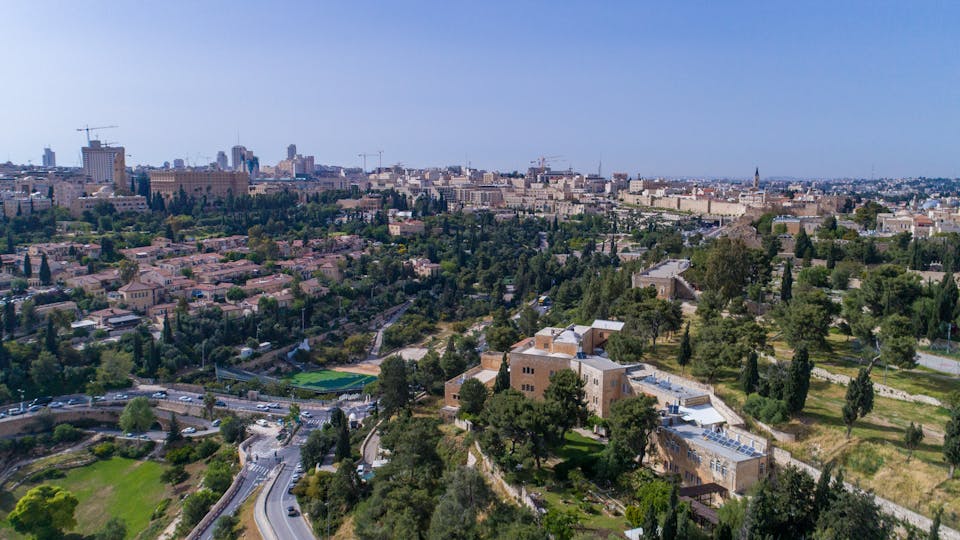
So, the next time your Sar-El Tours’ bus is slowed down in heavy traffic, remember that it was God who promised to fill up this land with His children.
6. Not One Stone Shall Remain Upon Another…
Possibly the most detailed and sobering monologue that Jesus of Nazareth gave regarding the “End of the Age” was during His Passion Week. In the days leading up to Passover and His crucifixion, Jesus spent much of His time entering and leaving Jerusalem.
During this period, He engaged in intense confrontations with the priesthood, the Sadducees, and the Pharisees. These confrontations centered around their practices and the errors He saw in their teachings.
It was during one of those intense days, as Jesus and His band of disciples departed the City (probably on their way to Bethany where they spent their nights), that “… one of His disciples said to Him, ‘Teacher, see what manner of stones and what buildings are here.’
No doubt pointing to the grand and beautiful Temple complex behind them). And Jesus answered and said to him, ‘Do you see these great buildings? Not one stone shall be left upon another that shall not be thrown down.’” (Mark 13:1-2).
The gospel of Mathew sheds more light on this epic conversation, saying, “Now as He sat on the Mount of Olives, the disciples came to Him privately, saying, ‘Tell us, when will these things be? And what will be the sign of Your coming, and of the end of the age?’” (Matthew 24:3).
Answering their question, Jesus described global hardships and trials that will typify the End of the Age just before His return with His Kingdom rule. But for the disciples, probably the most shocking element of that swiping prophecy was Jesus’ opening prediction that Jerusalem will be destroyed and that “Not one stone shall be left upon another that shall not be thrown down.” (Mark 13:2). What could He have meant?
Visiting the Southern Steps of Temple Mount today and studying the archeological marvels displayed at the Davidson Center next to it, guests traveling with our Sar-El Tours’ groups can see for themselves the evidence of that prophecy.
Viewing the massive ancient stones (from the Temple era) piled up in heaps, they cannot miss the silent witnesses of the distant destruction.
About 40 years after Jesus of Nazareth made this shocking prediction, the 10th Roman Legion broke into Jerusalem with great wrath after a long and terrible siege. The First Century historian, Josephus Flavius, detailed the tragic destruction wrought by the Romans.
They slaughtered and crucified the surviving defenders, banished the Jewish residents, and burned down the Temple. In their effort to erase even the memory of the God of Israel, they took the Temple apart stone by stone.
Eventually, with Jerusalem nearly entirely razed to the ground, the Romans rebuilt it as a new pagan city called Aelia Capitolina, and constructed a temple to Jupiter on the very site of the former Temple of the God of Israel.
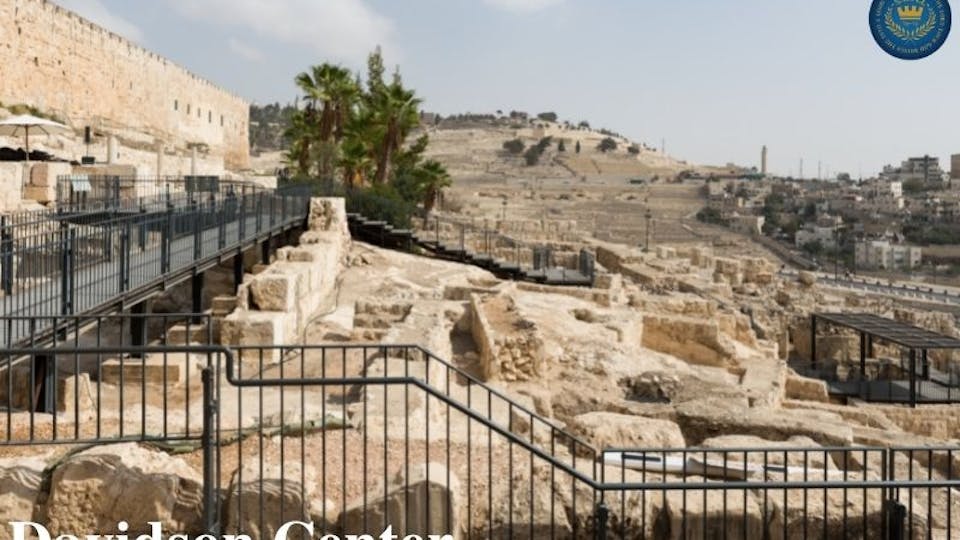
These stones still cry out today, if you can hear their voice, testifying about hell’s all consuming hatred for the purpose and presence of God on earth.
And as you ponder their voice, remember that as accurate and credible as are the Scriptures describing Jerusalem’s destruction, so are the great promises describing her consolation!
7. God’s Name
Camping on the eastern side of the Jordan River just before entering the Promised Land, Moses reiterated God’s requirements and instructions to Israel. Moses prepared the young nation, now made up mostly of the children and grandchildren of those who had left Egypt 40 years earlier, to assume national responsibilities and godly conduct in their new land.
He also described their future Capital City. He said, “But when you cross over the Jordan and dwell in the land which the LORD your God is giving you to inherit, and He gives you rest from all your enemies round about so that you dwell in safety, then there will be the place where the LORD your God chooses to make His name abide.
There you shall bring all that I command you: your burnt offerings, your sacrifices, your tithes, the heave offerings of your hand, and all your choice offerings which you vow to the LORD. And you shall rejoice before the LORD your God, you and your sons and your daughters, your male and female servants, and the Levite who is within your gates…” (Deuteronomy 12:10-12).
Nearly 500 years after Israel entered the Promised Land, a young King by the name of David consolidated the 12 Tribes and set up His Capital City in the newly conquered Jebusite stronghold which was already named Jerusalem hundreds of years earlier (see Joshua 15:63).
For the next 3,500 years this city was to become the focal point of worship, adoration, conflict, wars and international intrigue. The world remains deeply preoccupied—and some might say obsessed—with Jerusalem, more so than with any other capital city.
This is evident in the unusually high number of U.N. resolutions focused on Jerusalem, her people, and her destiny. These resolutions far surpass those concerning any other nation on earth.
However, most of us didn’t appreciate how accurate the word of God is until we gained the technology of using aerial photography and satellite imagery. Researchers analyzing aerial photographs of the Jerusalem mountains from high above made a remarkable discovery.
In the topographical shapes of the valleys and mountains surrounding the city, they found what appeared to be the actual name of God, יהוה (YHVH). This phenomenon revealed the divine name etched naturally into the landscape around the City of God. It’s the very city where God Himself promised to “make His name abide.”
Amazing, isn’t it? You may need eyes of faith to see what these researchers see in these photographs, but that is how faith works; it is its own reward. As the writer of the Epistle to the Hebrews wrote long ago, “Now faith is the substance of things hoped for, the evidence of things not seen.” (Hebrews 11:1).
8. Armageddon
Nestled below the northern ridge of the Carmel Mountain Range, almost all of our Sar-El Tours’ groups visit the site of Armageddon. Har-Megiddo, meaning the Mount of Megiddo in Hebrew, is the site of an ancient biblical community rich with archaeological evidence.
It reveals traces of at least 14 different civilizations, each built upon the ruins of the previous one. This repeated cycle of destruction and reconstruction occurred due to the strategic significance of the valley below.
Beneath the ancient community of Megiddo stretches the broad and fertile Valley of Jezre’el which is the focal point of another End Times and well known prophecy. Describing the final battle of this age, John the Apostle wrote,
“Then the sixth angel poured out his bowl on the great river Euphrates, and its water was dried up so that the way of the kings from the east might be prepared. And I saw three unclean spirits like frogs coming out of the mouth of the dragon, out of the mouth of the beast, and out of the mouth of the false prophet.
For they are spirits of demons, performing signs, which go out to the kings of the earth and of the whole world, to gather them to the battle of that great day of God Almighty… And they gathered them together to the place called in Hebrew, Armageddon.” (Revelation 16:12-16).
When Napoleon Bonaparte, the ambitious French general, stood at this site during his military campaign to liberate the Holy Land from the Turks, he was quoted saying, “One day, all the armies of the world will gather in this place for battle.”
No doubt, Napoleon knew his Bible, and as a brilliant tactician he was aware of the strategic value of the broad Valley in front of him that would one day become the staging ground for the last great battle against Jerusalem, as described in the Book of Revelation.

When visiting Armageddon with one of our Sar-El Tours’ groups, you too will see the word of God come to life in the very topography and history of the land of Israel. And as many of our friends do at Megiddo, you too can lift up your hands in prayer and worship to the God of Israel who promised, saying,
“So shall My word be that goes forth from My mouth; It shall not return to Me void, but it shall accomplish what I please, and it shall prosper in the thing for which I sent it.” (Isaiah 55:11).
Now that you have seen a glimpse of various biblical texts coming to life throughout the land of Israel, we welcome you to the full banquet table. Take a look at the sample itineraries that we have prepared for you, and consult with our experienced operators about creating a customized travel plan for you or for your groups as you plan your next Israel trip.
This way, you too will be able to experience the fullness of the scripture which says “taste and see that the Lord is good.“
Looking forward to hearing from you,
Your Sar-El Tours team